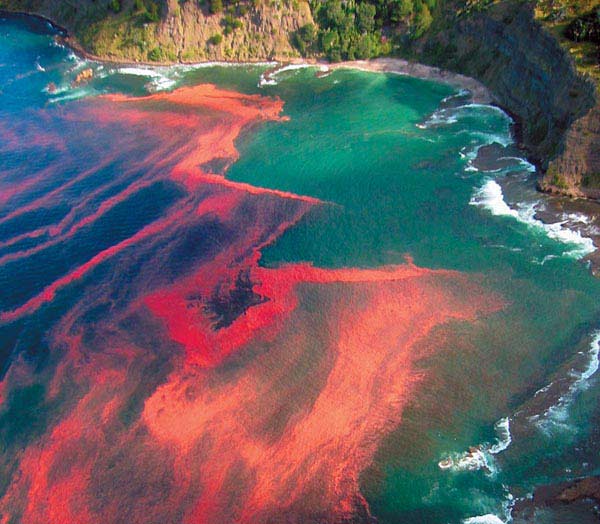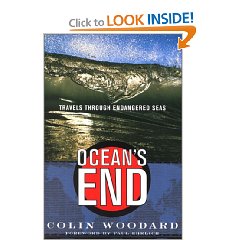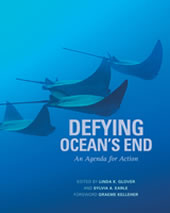We could have subtitled this the "doom and gloom" lesson. Because, yes, it does seem that the future of the marine realm is troubled in a variety of ways. In thinking about the problems facing our oceans, one could consider this quote from Mahatma Gandhi..."you must not lose faith in humanity. Humanity is an ocean; if a few drops of the ocean are dirty, the ocean does not become dirty." This works on various levels, don't you think? We can have hope for the future...alas, more than a few drops of the ocean are dirty now, especially the coastal ocean. Humans have too long thought that "dilution is the solution" to waste products, and we have allowed too much of our waste to escape down rivers and through the atmosphere to accumulate in the ocean and in oceanic sediments. It would appear that we are beginning to pay the price for our profligacy and neglect. Can we make amends? We hope so, right? In educating our youth we do not want to leave them with the impression that "all is lost," "we're hosed," the "system is kaput," etc. On the other hand, it is essential that everyone understand what is going on and what may come in the future.
What are the major environmentally related issues facing the ocean today?
- many coral reefs are affected by various bacterial and viral diseases that appear to have spread over the past decade or so, impacted by warming of waters (global warming?) beyond the tolerance of corals, which may be the major cause of "bleaching," and, a potential threat to their ability to form skeletons because of the buildup of carbon dioxide in the atmosphere and ocean.
- "red tides", (sometimes referred to as HABs--harmful algal blooms) dense blooms (not in the flowering sense, but in numbers) of toxic phytoplankton (near surface-dwelling, single-celled photosynthetic floating organisms) are appearing in estuaries, bays and coastal regions. These organisms, typically dinoflagellates, secrete neurotoxins that can accumulate in certain marine organisms (e.g., raw oysters! mmmmmm!) that some humans love to eat, and will cause paralysis or death if consumed. In fact, crabbing season (a San Francisco tradition in December) was canceled in 2015 due to HABs!) They also cause other problems for the normal marine biota that we will examine later. Red tides have been known for decades, but their frequency and distribution is increasing rapidly.
- "dead zones" and "hypoxia," regions of estuaries, bays and even the open continental shelves that suffer from oxygen deficiencies. Extreme low oxygen concentrations eliminate benthic organisms (e.g. clams, scallops) and reduce habitat for oysters, crabs, fish and the like. These "dead zones" are likely caused by a surfeit of nutrients, excessive plankton blooms, restricted mixing of surface and deeper waters, and high rates of oxygen consumption by bacteria that break down the falling organic matter. These areas seem to be increasing in number and expanding.
- oil spills and leakage that harms waterfowl and marine mammals (e.g. the BP incident). We will not cover this issue in the course. Double-hulled oil transport vessels seem to be the main solution to this issue (that, or stop using oil and gas...?).
- overfishing and a "jellyfish ocean". This is discussed in the Lesson on fish and fisheries.
These issues (and their possible solutions) are covered in two relatively recent books using the theme "Ocean's End."
We recommend both: Ocean's End by Colin Woodward (2001) is a bit depressing but graphic, whereas Defying Ocean's End (2004) by Linda K. Glover, Sylvia A. Earle (a real force in marine science and diving), and Graeme Kelleher gives the "agenda" for approaching the problems. Also, visit the "Defying Ocean's End" wikipage for other details and updates.
Let's jump right into the Chesapeake Bay story as an example of issue #3 (and #2 to some extent).


